If your car sputters on the highway, stalls at stoplights, or won’t start after you fill the tank, a bad fuel pump might be to blame. You’ve probably heard that AutoZone can test fuel pumps-but can they really? And if they can, what exactly do they check? This isn’t just about saving a few bucks on a diagnostic fee. It’s about knowing whether you’re being sold a part you don’t need-or worse, ignoring a real problem that could strand you.
What AutoZone Can and Can’t Do
AutoZone doesn’t have a dedicated fuel pump test bench like a dealership or specialty shop might. You won’t find a technician plugging your pump into a machine that reads pressure and flow rates. But they can help you test your fuel pump with tools they already have on hand-and that’s more useful than you think.
Most AutoZone locations offer free part testing for batteries, alternators, and starters. Fuel pumps? Not officially on the list. But here’s the thing: many stores will still help you test a fuel pump if you bring it in. It’s not a guaranteed service, but it’s common enough that you should ask. The key is knowing what to ask for and what to expect.
How to Test a Fuel Pump Yourself at AutoZone
If you’ve pulled the fuel pump out of your car, take it to AutoZone with the electrical connector and fuel lines still attached. Ask for a 12-volt power source. Most stores have a bench tester-a simple setup with jumper cables and a battery. They’ll connect the pump directly to power and see if it runs.
Here’s what they’re looking for:
- Does the pump turn on? A quiet hum means it’s getting power and the motor works.
- Is there fuel flow? They’ll often hold the outlet over a container to see if fuel sprays out consistently.
- Is the flow strong? A weak stream or dribble means the pump is worn out.
- Any grinding or clicking noises? That’s a sign of internal damage.
This isn’t a lab-grade pressure test, but it catches 90% of bad pumps. If the pump spins but doesn’t deliver fuel, it’s dead. If it doesn’t spin at all, the issue could be the motor, the brushes, or a bad internal switch.
What AutoZone Won’t Do
AutoZone won’t test a fuel pump while it’s still installed in your car. They don’t have the tools to measure fuel pressure without disconnecting lines and attaching gauges. That requires a fuel pressure tester, which most DIYers don’t own-and most AutoZone staff aren’t trained to use on-site.
They also won’t diagnose electrical issues like a bad relay, fuse, or wiring harness. If your pump isn’t getting power, they can’t trace the circuit back to the ignition switch. That’s a job for a mechanic with a multimeter and a wiring diagram.
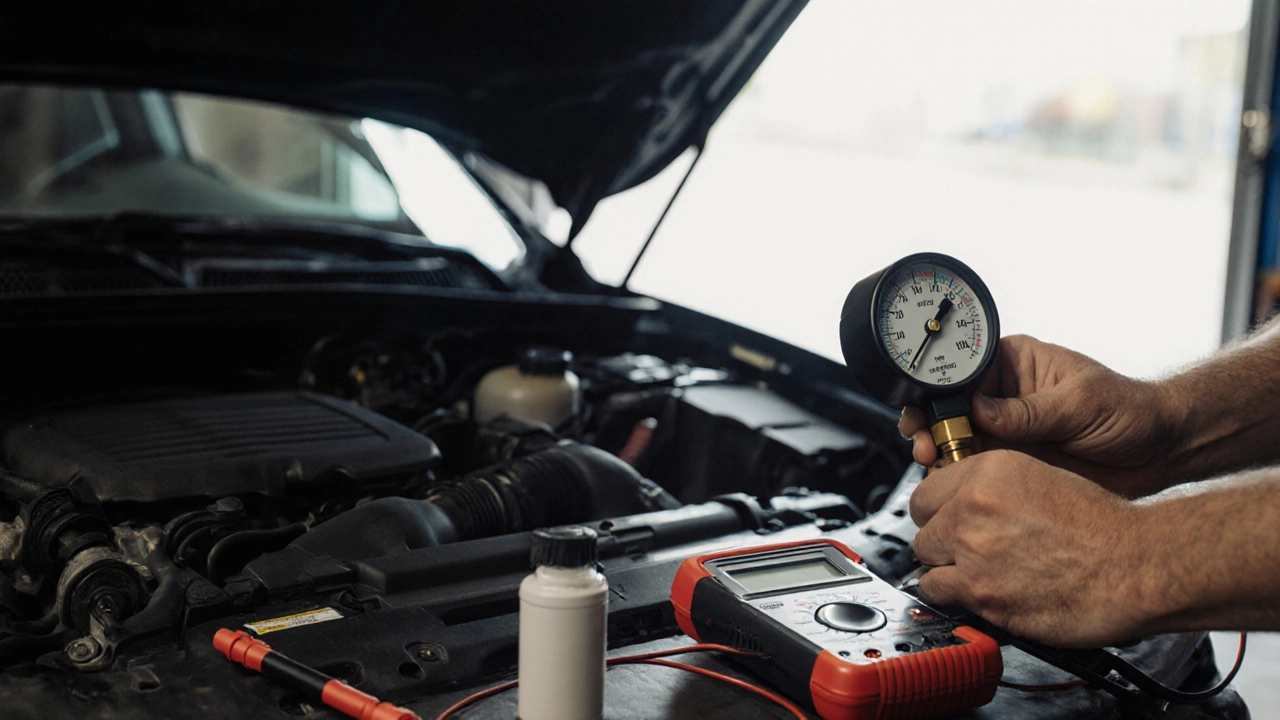
What Symptoms Point to a Bad Fuel Pump?
Before you pull the pump, make sure it’s actually the culprit. Many people replace fuel pumps only to find the real problem was something simpler-and cheaper.
Here are the real signs of a failing fuel pump:
- Engine sputters at high speeds-especially on the highway.
- Car loses power when climbing hills or under load.
- Engine won’t start, but cranks normally (no clicking, no fuel smell).
- Intermittent stalling, especially after the car warms up.
- Loud whining noise coming from the fuel tank area.
Compare that to other common issues:
- Bad fuel filter: Same symptoms, but usually happens gradually and improves after replacement.
- Weak battery: Engine cranks slow, lights dim-fuel pump won’t get enough power to run.
- Faulty fuel pressure regulator: Causes rich or lean codes, not outright failure.
If your car has a check engine light, scan it. A P0190 (fuel rail pressure sensor) or P0087 (low fuel pressure) code supports a fuel pump issue-but doesn’t confirm it.
How to Get a Real Fuel Pressure Test
For a true diagnosis, you need to measure pressure at the fuel rail. This requires:
- A fuel pressure gauge (costs $30-$60 at AutoZone).
- A way to connect it to the fuel system (usually a Schrader valve on the fuel rail).
- Knowledge of your car’s specs-most pumps run between 40-65 psi, but it varies by model.
AutoZone sells these gauges and will often lend you one for free with a deposit. You can do the test yourself. Just follow the steps:
- Relieve fuel pressure by disconnecting the fuel pump fuse and cranking the engine.
- Attach the gauge to the fuel rail test port.
- Turn the key to “on” (don’t start the engine). The pump should prime for 2-3 seconds. Note the pressure.
- Start the engine. Pressure should hold steady under idle.
- Rev the engine. Pressure should rise slightly.
- Turn off the engine. Pressure should hold for at least 5 minutes.
If pressure drops fast, you have a leak-either in the pump, regulator, or injector. If pressure is too low, the pump isn’t delivering enough. If it’s too high, the regulator is stuck.
When to Replace the Fuel Pump
Most fuel pumps last 100,000 to 150,000 miles. If your car is older and you’re seeing symptoms, replacement is often the safest fix. But don’t just swap it blindly.
Here’s what to do before buying:
- Test the pump at AutoZone if you’ve removed it.
- Check the fuel filter-it’s cheaper and easier to replace.
- Inspect the fuel tank for debris or water contamination.
- Verify the relay and fuse are good.
- Use a multimeter to check for 12 volts at the pump connector.
AutoZone carries OEM-equivalent pumps from brands like Delphi, Airtex, and Bosch. They’re reliable and come with a lifetime warranty. Avoid the cheapest no-name brands-they often fail within months.
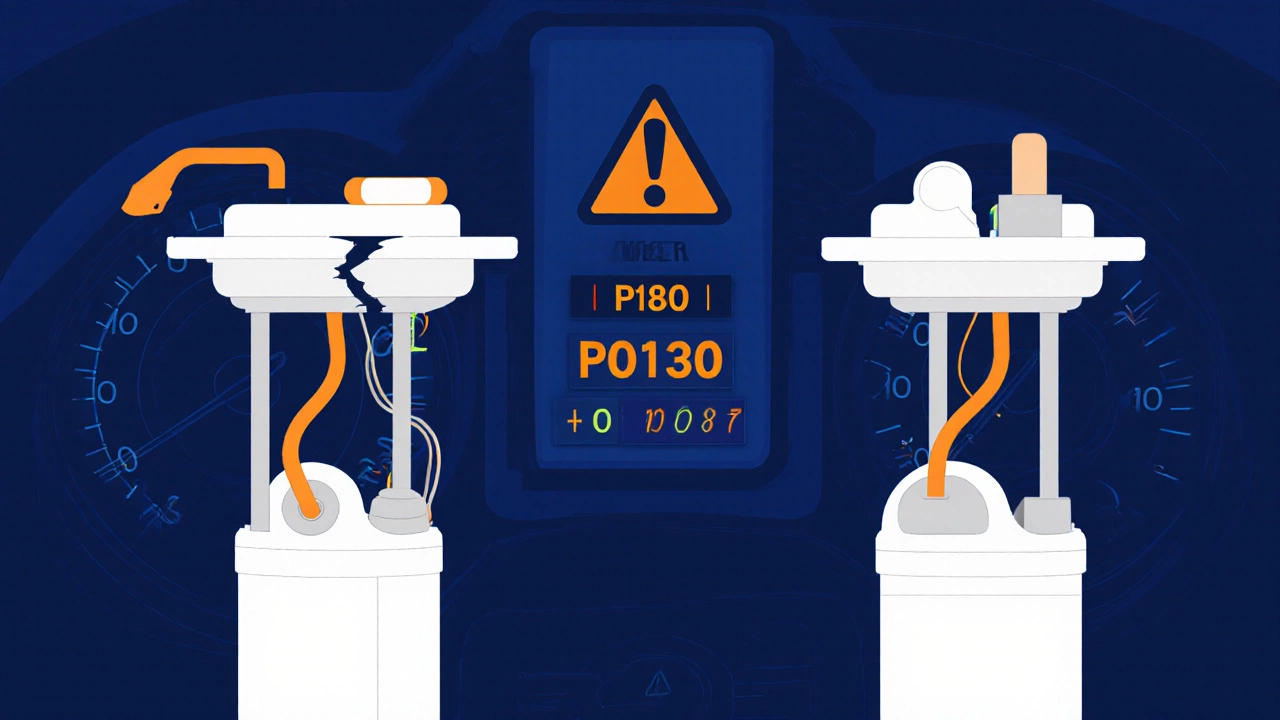
What to Do If AutoZone Says No
If the store refuses to test your pump, don’t walk away. Ask for a fuel pressure gauge rental. Most locations will lend one for free with a credit card deposit. You can test it yourself in your driveway in under 30 minutes.
If you don’t want to do it yourself, take the car to a local mechanic. Many independents will do a basic fuel pressure test for $50-$75. That’s cheaper than replacing a pump you don’t need.
Remember: a fuel pump test isn’t magic. It’s just physics. Electricity makes the motor spin. The motor moves fuel. If fuel doesn’t move, something’s broken. AutoZone can help you prove it.
Common Mistakes People Make
Here’s what goes wrong more often than you’d think:
- Replacing the fuel pump without checking the filter first.
- Assuming a no-start means a bad pump-when it’s actually a bad crank sensor.
- Ignoring fuel tank contamination. Rust, dirt, or water can kill a new pump in weeks.
- Buying a pump that doesn’t match the exact OEM spec. Even small differences in flow rate can cause driveability issues.
- Not replacing the fuel pump strainer. It’s usually sold separately and gets clogged over time.
Pro tip: If your tank is dirty, clean it before installing a new pump. Otherwise, you’re just setting yourself up for another repair in six months.
Final Advice
AutoZone won’t give you a full diagnostic, but they can give you a clear yes or no on whether your fuel pump is physically working. That’s half the battle. Use their tools, rent their gauges, and ask questions. Most staff have replaced dozens of pumps themselves.
Don’t let fear or uncertainty lead you to overspend. A bad fuel pump is expensive-but it’s also easy to confirm. Test it. Know it. Fix it right.
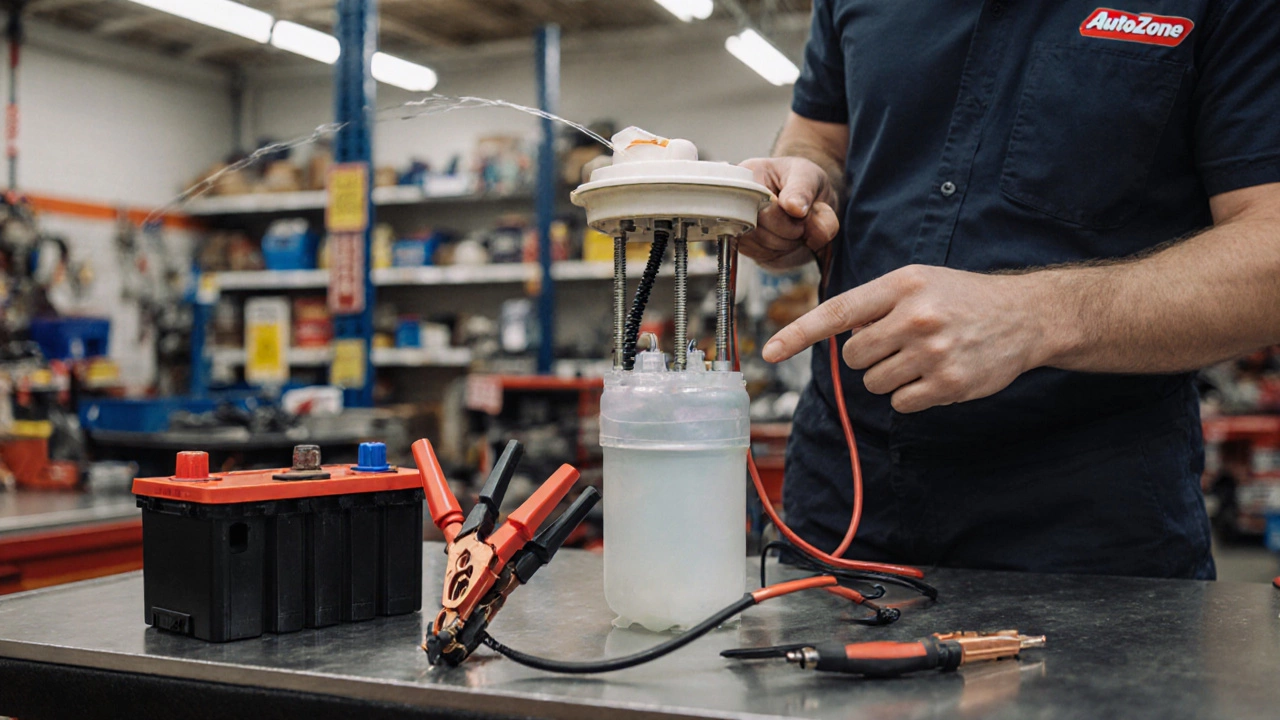
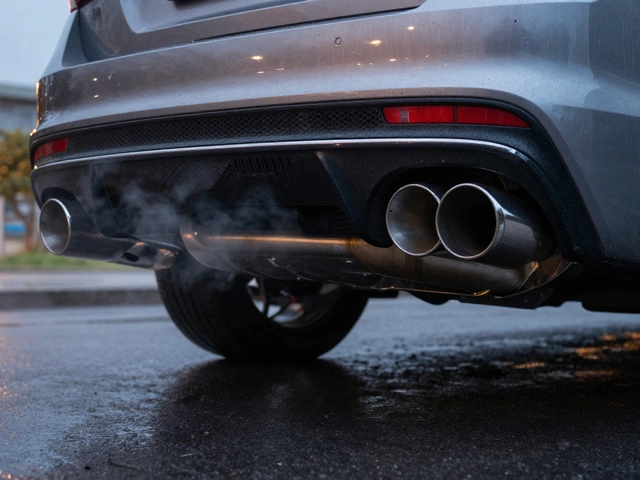
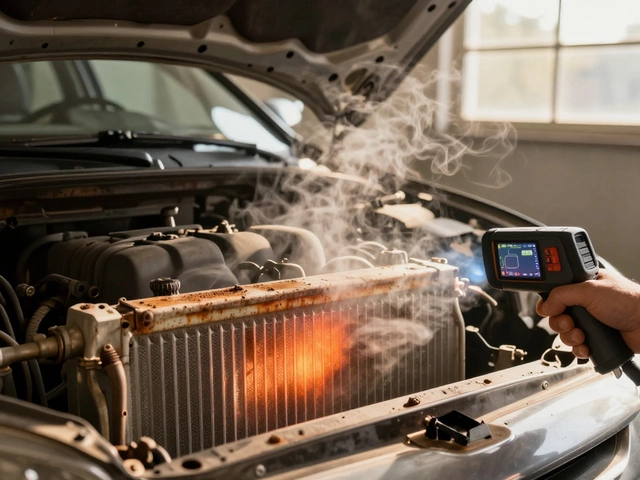
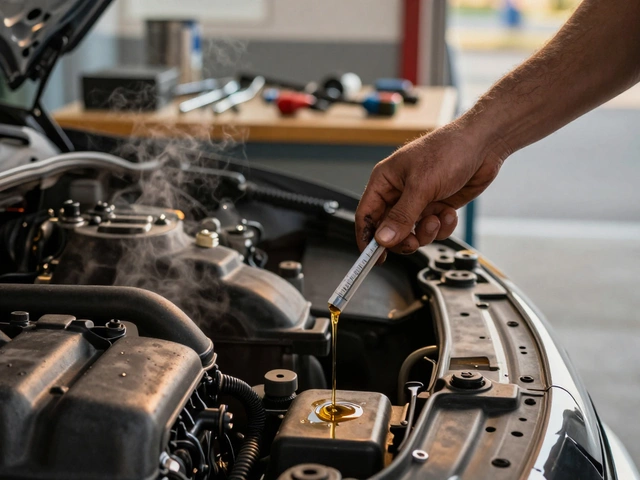
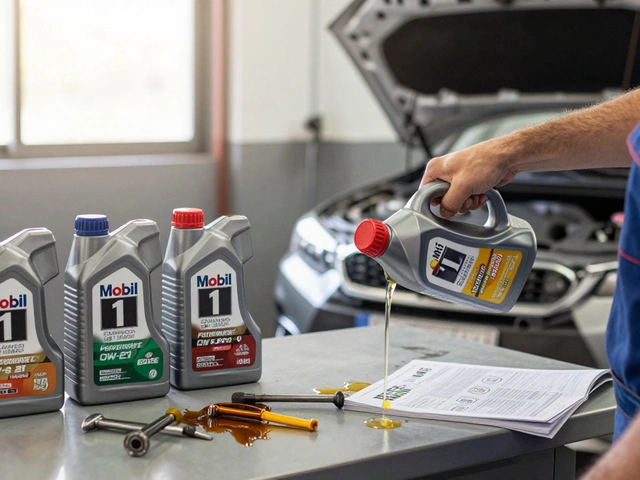


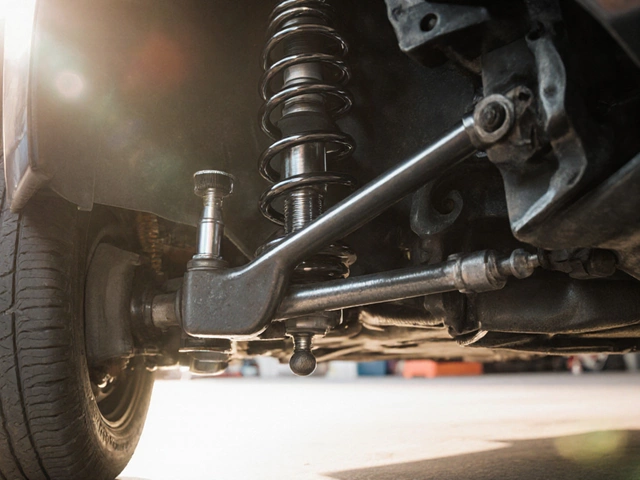

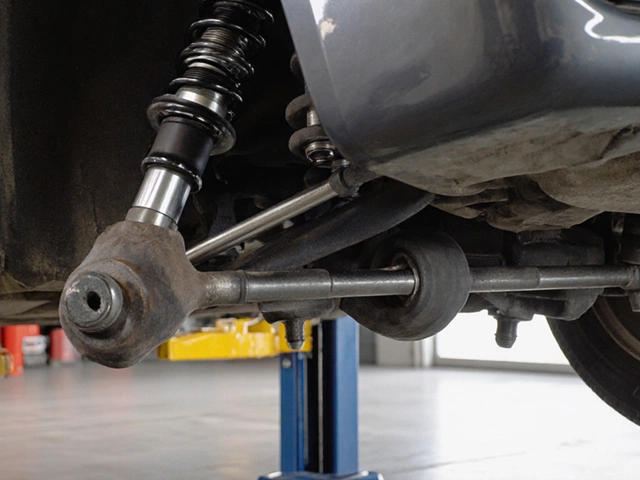

Write a comment